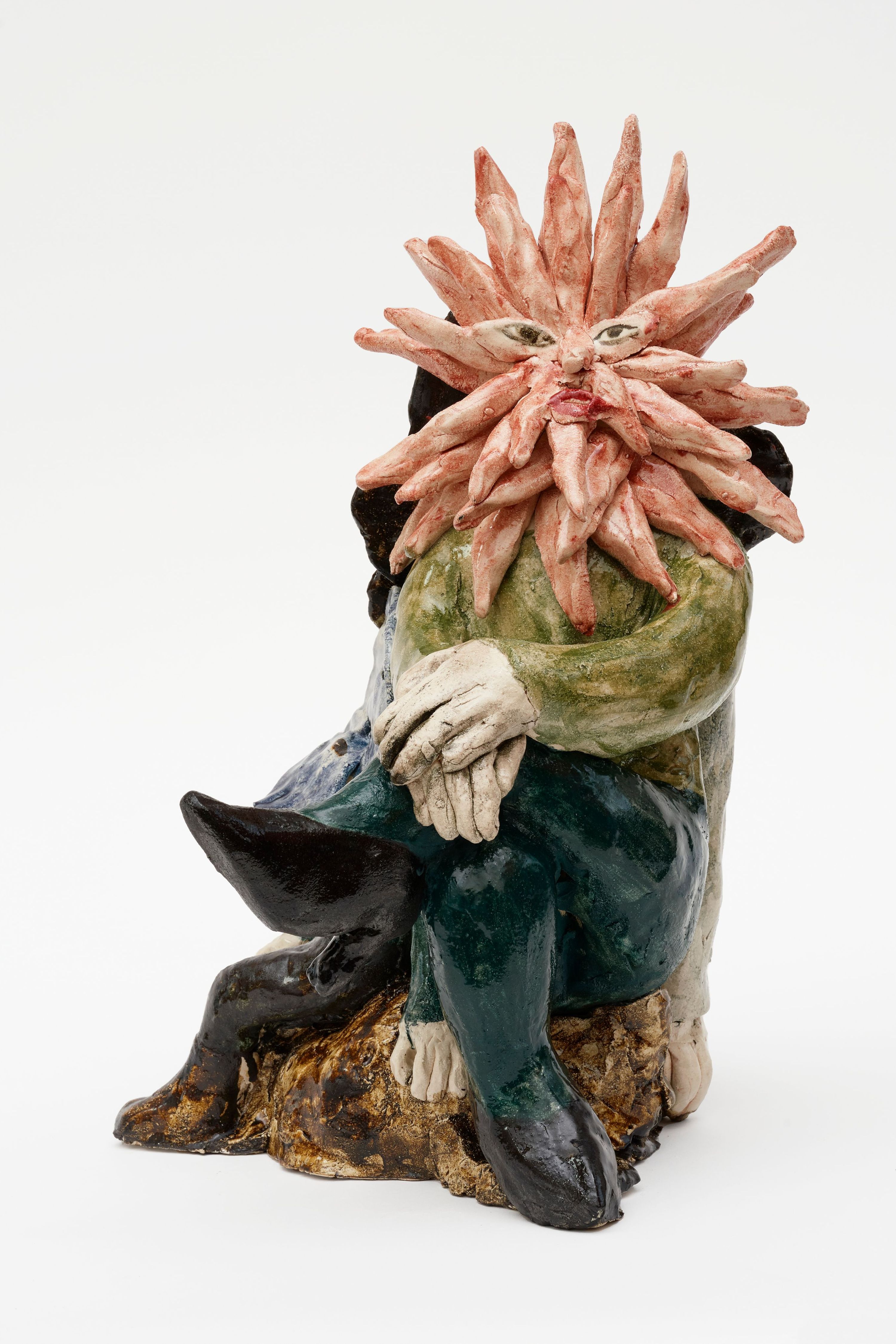Klara Kristalova
Family Portrait
, 2024Family portraits have a long tradition in Western art history. These artworks, generally paintings, not only capture the likeness of a specific family but also provide a glimpse into the lives, values, and social statuses of the portrayed individuals. Countless celebrated and renowned artists have undertaken the task of immortalising these familial bonds on canvas in legendary compositions like Francisco Goya’s (1746-1828) La familia de Carlos IV / Charles IV of Spain and His Family (1800-1801, oil on canvas, 280 x 336 cm, Museo del Prado, Madrid), where Goya, with his keen eye for detail and psychological insight, portrays the complexities of family dynamics and political power, or George Stubbs’s (1724-1806) Haymakers (1785, oil on canvas, 89.5 x 132.5 cm, Tate Britain, London), a poignant depiction of a farming family at work that offers a stark contrast to the more common opulent family portraits of the bourgeoisie, aristocracy, or royalty.
A quick glance at Klara Kristalova’s Family Portrait is more than enough to realise that we are dealing with an artist whose unique style sets her apart from all her predecessors in the genre. Obvious stylistic traits aside (Kristalova’s penchant for cross-fertilising human anatomy with elements from the plant kingdom permeates much of her sculptural work), and acknowledging that Family Portrait is a sculpture rather than a painting, this polychrome group of figures seems to playfully challenge the established conventions of family portraiture. The stiffly posed and well-dressed models that we habitually know from other traditional family portraits have been replaced here by a group of casually dressed seated characters, none of whom seem interested in meeting our gaze. The sense of togetherness and unity that generally characterises traditional family portraits also seems to be missing in Kristalova’s sculpture, where each of the individuals, lost in their own thoughts, turns their back to the others.
What are we then to make of this ‘inverted group dynamic’, characterised by overall aloofness, where the depicted characters are distancing themselves from each other as well as the onlooker? A clue may be found in a fairly recent interview with Kristalova. In connection with her 2023 solo exhibition, The Cold Wind and the Warm, at Lehmann Maupin in London, Kristalova told Bella Bonner-Evans (‘Klara Kristalova’s Ceramic Sculptures Tackle Climate Anxiety with Dark Humor’, artsy.net, 4 July 2023) about how she, ‘consumed by the never-ending news cycle and mounting evidence of the impact of global warming’ had ‘spent the last year ricocheting between feelings of deep dread and weary optimism.’ In her article Bonner-Evans recognises the exhibited works ‘powerful focus on the urgent issue of climate change’, whilst also pointing out that the artist discusses ‘the most monumental of topics through small details and a dark, gentle humour’:
The result is an immensely powerful exhibition where the theme of change is a vehicle to call for urgent and widespread action in response to impending ecological disaster. The artist’s state of continuous emotional flux and a self-inflicted pressure to communicate the reality of ecological decline have imbued her new body of work with a unique intensity. ‘It’s not obvious when you look at them, but the works come from a heaviness that I needed to express,’ Kristalova said.
Could it be that the three characters constituting Family Portrait share the concerns (‘Everything suddenly started to feel like a threat. […] I never thought that, in my lifetime, I would see the changes in the weather. Where I live, we no longer have ice in the winter and the summers have gotten so hot. Flowers that used to grow can no longer thrive in the dry soil. You can see and feel the change in the air’) voiced by Kristalova in her 2023 interview? Has a similar sense of powerlessness and despair in the face of an uncertain future left them deprived of their language, unable to communicate with each other, let alone any potential onlooker? When Firestorm Foundation acquired Family Portrait at the 2024 solo show Beast at Perrotin, Paris, Ophélie Ferlier-Bouat (director of the Bourdelle museum, Paris) wrote the following in the catalogue:
What emerges is a fantastic world where anxiety borders on humour […] Concerned about the rise of extremes and mankind’s destructive attitude, Kristalova constructs a world that reveals the fragility of life and the complexity of the relationships that are forged between beings. The viewer is invited to question his or her perception, which changes according to his or her psychology and state of mind.
Provenance
Perrotin, Paris, Beast, 13 April-1 June 2024.
Firestorm Foundation (acquired at the above).
Copyright Firestorm Foundation
